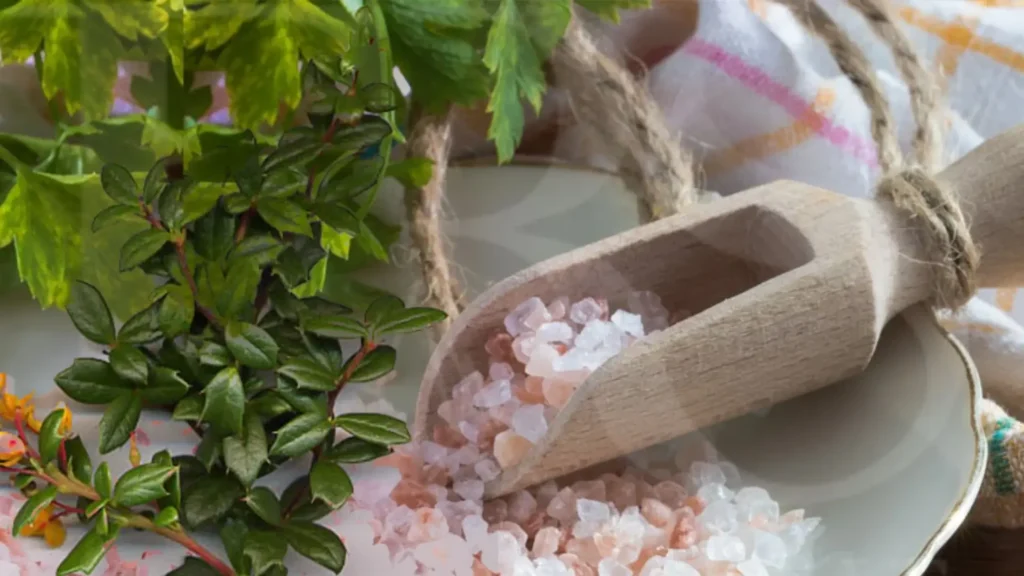Himalayan Salt Diffuser Benefits
Himalayan Salt Diffuser Benefits Unlocking Nature’s Healing Power Did you know that Himalayan salt, often referred to as “white gold,” is not just a culinary delight but also a powerhouse of health benefits? This ancient mineral, harvested from the pristine salt mines of the Himalayas, is renowned for its unique composition and therapeutic properties. It contains over 80 trace minerals that are essential for maintaining our body’s balance. But what happens when you combine this remarkable salt with the soothing aromas of essential oils? You get a Himalayan salt diffuser—an innovative way to enhance your living space while promoting wellness. Table of Contents Key Facts About Himalayan Salt Diffusers Himalayan salt diffusers are more than just decorative pieces; they serve multiple functions that can significantly improve your environment. Here are some key facts: Natural Ionization: Himalayan salt naturally emits negative ions when heated, which can help purify the air by neutralizing pollutants and allergens. Humidity Regulation: These diffusers can help maintain optimal humidity levels in your home, making the air feel fresher and more comfortable. Aesthetic Appeal: With their warm glow and natural beauty, Himalayan salt diffusers add a touch of elegance to any room. How to Use a Himalayan Salt Diffuser? Using a Himalayan salt diffuser is simple and rewarding. Just add a few drops of your favorite essential oil to the salt, and let the warmth of the lamp release the soothing scents into the air. The combination of salt and essential oils creates a calming atmosphere that can enhance your mood and promote relaxation. Creating Your Own Himalayan Salt Diffuser Materials Needed for Your DIY Diffuser Creating your own Himalayan salt diffuser can be a fun and fulfilling project. Here’s what you’ll need: Himalayan salt crystals or a salt lamp A small bowl or dish Essential oils of your choice A heat source (like a tealight candle or an electric lamp) Step-by-Step Process to Making Your Diffuser Choose Your Salt: Select high-quality Himalayan salt crystals or a lamp. Prepare the Base: Place the salt in a bowl or on a heat-safe surface. Add Essential Oils: Drizzle a few drops of your chosen essential oil onto the salt. Heat It Up: If using a salt lamp, turn it on. If using a candle, light it carefully underneath the salt. Enjoy the Aroma: As the salt warms, it will release the essential oils into the air, creating a soothing environment. The Importance of Essential Oil Blends Essential oils are concentrated plant extracts known for their therapeutic properties. When combined with Himalayan salt, they can amplify the benefits of both, creating an aromatic experience that promotes relaxation and well-being. Recommended Essential Oil Blends Here are a few essential oil blends to try with your Himalayan salt diffuser: Calming Blend: Lavender, chamomile, and bergamot Energizing Blend: Peppermint, lemon, and eucalyptus Mood Booster: Orange, rosemary, and frankincense Benefits of Using Essential Oil Blends Using essential oil blends can enhance your mood, reduce stress, and improve focus. The right blend can transform your environment, making it a sanctuary of peace and tranquility. Switching Up Your Scents Don’t hesitate to experiment with different essential oil combinations. Switching up your scents can keep your space feeling fresh and invigorating. The Gift of Himalayan Salt Diffusers Himalayan salt diffusers make thoughtful gifts for friends and family. They not only beautify a space but also promote health and well-being. Whether for a housewarming, birthday, or holiday, a Himalayan salt diffuser is a gift that keeps on giving. Safety Tips for Using Himalayan Salt Diffusers While Himalayan salt diffusers are generally safe, here are some tips to ensure safe usage: Keep Away from Water: Avoid placing the diffuser in areas where it can get wet, as salt can dissolve. Monitor Heat Sources: If using a candle, never leave it unattended. Use Quality Essential Oils: Ensure the oils you use are pure and safe for diffusion. Conclusion Himalayan salt diffusers offer a unique blend of aesthetic appeal and health benefits, making them a valuable addition to any home. By harnessing the natural properties of Himalayan salt and the therapeutic effects of essential oils, you can create a calming atmosphere that promotes well-being. Whether you choose to purchase a diffuser or create your own, the benefits of incorporating Himalayan salt into your daily routine are undeniable. Frequently Asked Questions What are the benefits of using a Himalayan salt diffuser? Himalayan salt diffusers can purify the air, regulate humidity, and create a calming atmosphere with the addition of essential oils. How often should I change the essential oils in my diffuser? It’s best to switch out the essential oils every few days or when the scent fades to maintain a fresh aroma. Can I use any type of essential oil with my Himalayan salt diffuser? Yes, but it’s recommended to use pure, high-quality essential oils for the best results. Is it safe to leave a Himalayan salt diffuser on overnight? If using an electric lamp, it is generally safe, but always ensure it is in a secure location away from flammable materials. Share This Post Subscribe To Our Newsletter Get updates and learn from the best our latest posts
Himalayan Salt Diffuser Benefits Read More »











